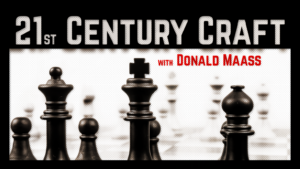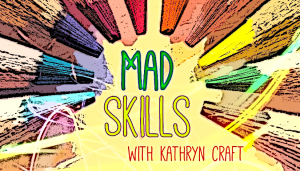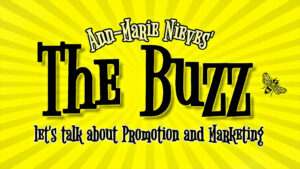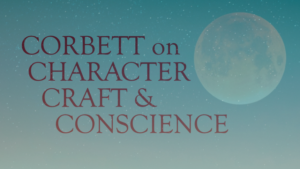Social Media
Photo courtesy of @sookieandivy from Instagram, used with permission.
“Everybody’s so creative!” is the catchphrase of social media personality @imtanaramallory. Tanara does interpretive dramatic voiceovers for other people’s disgusting-looking recipe videos and clickbait posts that tell you to put aluminum foil on your bathroom faucet before guests come over. I find Tanara hysterical. She’s one of my favorite creative voices on Instagram and one of my go-tos for middle-of-the-night anti-angst scrolling.
Speaking of being creative, have some of us lost our mojo lately? I know my own has taken a dive. It seems like scrolling Facebook and Instagram turns to doom in about twenty seconds. I got off Twitter in 2018 and recently left TikTok and LinkedIn and my new Bluesky feed seems to be all politics. I’m participating in fewer platforms and being more selective about who I follow. I’m also blocking more content. While I want to stay abreast of news, scrolling can feed feelings of existential doom and burnout. And it’s not just political news. On some days, seeing fellow writers post their multi-book deals and new cover art can unleash my personal demon, (whom I call Icky), who likes to poke me and say, Super impressive. Hey, look what they have that you don’t, you loser. Huh. Think you’ll ever have that? I think not.
Despite the gloom and doom, I still find Tanara and other content creators to be sources of enlightenment and joy. On Instagram, @shifferdiane delivers good sense and “Nana loves you” comfort, while rescue dogs @sookieandivy “sit, stay, and cro-slay” with their hand-crocheted hats. I follow hundreds of knitters, needleworkers, and miniature makers and draw inspiration from the work of my fellow crafters. Of course, I also follow thousands of authors, writers, and bookstores, too, and yes; I spend a ridiculous amount of time on funny dog videos and on forwarding the very best ones on to my daughter, whether she wants to see them or not.
There seems to be a surge—maybe instigated by Covid lockdown, maybe perpetuated by recent political events—of folks taking up crafts and needlework. Are we all in search of new sources of inspiration, or looking for comfort?
At twenty-eight, my daughter began to knit recently, in spite of my cajoling and offering to teach her since she was four. She’s taught herself by watching YouTube videos. I introduced her to a site called Ravelry, which is a mecca for knitting and crochet. She quickly caught the bug and joined some forums there. (I now confess that I spend other middle-of-the-night hours scrolling my happy-place Facebook group called Stranded Knits, where the chatter is all yarn and knitting color work, all the time.) Things can get snarky and heated, such as in a recent query from a member asking for help to find a pattern for a sweater she saw on the TV show Shetland. One member said (I paraphrase), “You could do a reverse Google search from the photograph. So easy and yet it’s amazing how few bother.” Well. As you can imagine, this began something of a kerfuffle over […]
Read MoreI write novels—made-up stories. I’m neither a journalist nor a historian, but truth, facts, and extensive research anchor my work.
For each story, I read hundreds of books and articles—current and archival—delving into topics as varied as traumatic brain injury, organic skincare products, the history of protest art, and Freedom Summer in Greenwood, Mississippi.
There is no separating my belief systems from my storytelling. My characters—whether protagonists or antagonists—are never wholly good or bad. They are complicated souls shaped by their histories, desires, and the turbulent world around them. To me, the richest novels arise from the stew of familial conflicts within the broader societal currents that shape our lives.
But what about when I step out from behind my characters? Should I reveal my politics, fears, and convictions?
Having grown up obsessively reading about slavery, the Holocaust, and oppression (I was not a fun child), and with a family forced to escape Germany and Romania because of politics, I believe art and life must collide. Other than Native Americans, aren’t we all children of immigrants? And if so, shouldn’t our art reflect our responsibility to protect one another?
My novels will always contain strong beliefs woven into propulsive plots and (I pray) fascinating, sometimes infuriating characters—but what about when I remove the scrim of the story?
Writers face difficult choices within and outside of fiction, especially in today’s hyper-polarized social media landscape.
The Balancing Act: Politics, Publishing, and Readers
Many of us wrestle with a fundamental dilemma:
Author Julie Carrick Dalton articulated something that resonated deeply:
“I teach a class at Tufts called Climate Fiction & Activism, where we explore whether art is a form of activism. Do artists owe their audience anything beyond a good story? In my opinion, no. But that doesn’t mean we must shy away from our beliefs. If I want my personal politics reflected in my work, that’s my prerogative. I can’t write honestly without reflecting my fears about our climate crisis. Readers who disagree can choose another book.
Also, I am not very active on social media. I hardly ever post about anything. This is not a reflection of wanting to avoid politics. It’s more about my discomfort with social media in general.“
Catherine McKenzie offered a pithy perspective that had me nodding—yes, we have platforms and can choose to use them.
“I don’t overtly include politics in my books, though political themes—especially feminism—do surface. But I never shy away from expressing my political views online. If you have a platform, you can choose to use it.”
Virginia Pye cut straight to the heart of the issue:
“All writing is political. A writer’s worldview inevitably seeps into their stories. But publishing is risk-averse. I recently struggled to sell a novel set during the 2020 social justice protests and the removal of Confederate monuments in Richmond, Virginia. I was repeatedly told that readers don’t want to be reminded of that time. Fortunately, a smaller, more daring press, Koehler Books, embraced it. Novels demand too much time and effort to tell anything other than the stories […]
Read MoreHave you made your New Year’s resolutions? Good for you! And good luck! May your resolutions prove easy to enact and the year ahead be a year of fulfillment.
Resolutions and goals are good, but today I have a different New Year’s challenge to bring to you. It’s a list of questions, the point of which is to help you refine your moral inventory as a storyteller. “Moral inventory”? What is that, a step in some writing addiction recovery program?
No, it’s a way to clarify your view of our human experience. And why is that important? We’ll get to that. But first, the questions. For each of the following questions, choose and write down the option which you feel best represents your own outlook and your overall view of the human experience. Make a list.
Here’s the catch: the answer “both” is not allowed. For each question, choose one option only. Don’t think too hard. Go with your gut. The option that weights strongest for you is the right option. There’s no judgment. Results are private.
Ready?
The Questions
The Mirror and the Arrow
Done. You should now have a list of words that are associated with how you fundamentally see yourself and our human experience. I’m particularly interested in your answer to the final question. Why? Because it tells me the unconscious intention underlying your stories. It says whether your stories are mirrors or arrows.
Those terms represent the two primary aims of fiction, which are either to 1) reflect our condition and tell us who we are, or 2) show us our possibilities and point us to who we can be. Those contrary intentions in turn tend to lead to two fundamentally different story types: stories of fate or stories of destiny.
In stories of fate, adverse conditions befall. Things happen to main characters. Such characters do not, at first, have pre-existing power. By contrast, in stories of destiny main characters have inherent agency, which is the pre-existing ability to bring about needed change. They are presented with a task.
Fate characters are challenged. They are trapped but, eventually, feel hope and find a way. They struggle, survive, gain strength, endure, heal, overcome guilt and achieve forgiveness, especially of themselves.
Destiny characters are charged and appointed. They know what to do but it isn’t easy. They already have the needed skills and tools but, at some point, those fail. They face their fears and find courage. They fight, prove themselves and triumph.
Now, if I know you, you may well be thinking: How come a story can’t do both? Why can’t a character be both victim and hero? People […]
Read Morephoto adapted / Horia Varlan
Novel openings don’t always start with a bang. Or at a run, such as in the example I analyzed in last month’s post. This month, thanks to a suggestion by community member Barbara Morrison, I’ll look at how three other types of openings invite the reader into the story—and at the end, leave one for you to dissect.
Hit the Ground Walking
Character movement can create the sense that the reader is merging into a story that’s already in progress. Like last month’s example, the character here is moving—but slower. Here’s the opening of The Girl in the Stilt House by Kelly Mustian, set in the spring of 1923.
Ada smelled the swamp before she reached it. The mingling of sulfur and rot worked with memory to knot her stomach and burn the back of her throat. She was returning with little more than she had taken with her a year before, everything she counted worthy of transporting only half filling the pillowcase slung over her shoulder. It might have been filled with bricks, the way she bent under it, but mostly it was loss that weighed her down. The past few days had swept her clean of hope, and a few trinkets in a pillowcase were all that was left to mark a time when she had not lived isolated in this green-shaded, stagnant setting. When she was a little girl, she had believed she loved this place, the trees offering themselves as steadfast companions, the wildflowers worthy confidants, but passing through now with eyes that had taken in other wonders and a heart that had allowed an outsider to slip in, she knew she had only been resigned to it. As she was again.
In addition to putting the protagonist in purposeful motion—Ada is is not meandering, but showing agency by pursuing a goal—this opening creates story movement by:
Read More
I have some homework for you.
For 2025, I want you to really think about two things: connection and purpose.
Try to…
Consider how you will…
Describe yourself…
Describe your writing…
What influences your work…
What do you want readers…
Answer this question honestly…
If you have questions, you can always email me – am@getredpr.com – or drop a comment below. Wishing Writer Unboxed readers a very happy and healthy holiday season.
Read MoreHello from Bisbee, Arizona. Have you been? Everything here is named Copper Queen This-or-That, after the played-out copper mine outside of town. Today you mine the antique stores for copper kettles, cast iron skillets and Western wear. There are historical hotels and outstanding meatloaf.
What am I doing around here? Teaching at a writers’ retreat, naturally, at a ranch deep in the southern New Mexico desert. The land around is vast and empty, a dried-up prehistoric seabed where now you can walk and hear nothing except your crunching footsteps. At night the Milky Way hazes serenely in the velvet black sky. It’s a place to hear your inner thoughts. Day or night, nothing moves.
Which brings me to manuscripts, and this week’s students. As is often the case with developing fiction writers, there are recurring issues in manuscripts as well as skills to impart, ranging from stronger narrative voice, to scene shaping, to emotions on the page, to micro-tension and more.
However, primary among the topics to tackle is the one that I term sequential narration. What that refers to is the tendency of newer fiction writers to spin out a story as if it is a transcript of the movie in the mind, a flowing visualization that walks alongside the main characters from the opening moment in time to the concluding moment in time.
The most obvious shortcoming of sequential narration is that it produces lulls, pages that present low-tension business such as lengthy arrivals, traveling between scenes, domestic humdrum, and so on. For the most part, those things are presented visually in the belief that anything that a protagonist might be doing matters if we can “see” it.
Summary—the collapse of time—can help with that, but that trick masks a misunderstand about what it is that conveys to readers that a story is progressing. What accomplishes that is not entirely what we “see” any more than it is the passing desert, seen through a car window, that gives one a sense of making progress over the land.
Drive along Highway 80 and you’ll understand what I mean. One mile of desert is very much like another. The desert going by is dull. After a short while, one’s sense of movement arises not from the car rolling along, mile by mile, but rather from road signs, monuments, far-off mountains, tiny towns and the thoughts in your head.
Newer writers believe that it is the plot events that provide a feeling of story progress. That’s true, in part, but another sensation of story movement comes from inside, including—and perhaps most importantly–from readers’ experience of human moments. Every time we “get” it—meaning not what a character feels but what a story moment feels like—then we inwardly take a step forward.
Call it emotional beats, if you like, but this kind of movement arises not from what characters are going through, but from what readers are going through. And one thing that readers can go through—if you make it happen—are human moments of recognition and connection.
Human Moments
In creating moments of human connection for readers, there are several variables. The first is narrative distance. However, it doesn’t matter how “close” we are to characters or not. What matters is whether what you are writing about on any given page produces […]
Read MoreThis is not an essay about writing tools, though pace is one of the major aspects of writing craft that we do need to master. No, this is about slowing down my internal pace, the pace of my thoughts and attention in order to inhabit the frame of mind where writing is possible.
This is part of what I posted recently to my personal Facebook account:
“Hello lovely folks on Facebook. I’m, going to be taking a break from this platform for a little while.
I’m having a hard time focusing on my writing and part of that is the distraction of drifting to social media when the work gets difficult. Part is the unrelenting drumbeat of disaster and despair that gets amplified on social media.”
I went on to say that I would be probably continue to post photos of my farm, pottery, and dogs to Instagram, (adding beauty to the world is important) but that I would be away from FB for the rest of the summer.
It has taken me over a year of worry and struggling with ‘FOMO’ to decide to do this: Ever since fellow unboxers Lance Shaubert and Marianna Martin made their clean break from social media, I’ve been convinced that I should follow suit. And while I do exceedingly little self-promotion/marketing online, the thought of losing even the small audience who may see my writing-related posts kept me feeding the ravenous beast.
A writer who came to novels via poetry, I understand the need to inhabit a quiet, thoughtful space in my own head. There needs to be a certain silence where connections can bubble up from the subconscious, where intent mingles with the gloriously random to create a numinous moment.
This requires constructing a cathedral in the mind. A place with vaulted ceilings and stained glass windows for the light to play in. A sacred space where ideas are protected, nurtured, encouraged. Or a nursery. A kind of greenhouse where our stories are shielded from late spring frosts, violent winds, drenching rain. I live on a homestead farm. I know what it’s like to have your hard work torn from the soil by browsing deer or drowned in mud from unseasonable weather.
Our stories are like tender seedlings. They will need to be transplanted in a larger garden, but not until they are sturdy enough to survive outside.
Perhaps these metaphors are enough to convince you to also create a slower pace. If not, I will share an additional reason to walk away from social media. My very personal and pressing reason: I need to relearn how to sit with the discomfort when the work gets hard. And the work has been so very hard for such a long time.
I have fallen into a destructive pattern of reaching for my cell phone and telling myself I need a five minute break that invariably stretches to an hour or more of scrolling (mostly) Facebook. It might be one thing if all I saw were messages, photos, and posts from friends and family. But no matter what I choose to follow, the algorithm rolls out what it wants me to see. What it thinks I want to see. What I don’t ever want to see. And by the time […]
Read MoreBy Ann-Marie Nieves with Randy Susan Meyers
Today’s post by Ann-Marie Nieves of Get Red PR features her perspective on marketing and the opinions of Randy Susan Meyers, her friend and client.
Will it be dueling points of view or simpatico? Read on to find out.
We are all marketers.
I know you don’t believe me. I know it feels safer to say, I can’t do this because I’m not a marketer.
You can continue to say…
I can’t.
I won’t.
I’m not.
It’s my publicist/marketer/publisher’s job.
But it’s your story. It’s your brand. So it’s your job too.
And letting the value of marketing rest solely on someone else’s shoulders is not enough to sustain you.
This advice isn’t exclusively about accepting that you need to get involved with spreading the word; I’m not saying get over it.
I’m asking you to open your arms wide and embrace your compelling story.
A few weeks ago, author Randy Susan Meyers wrote about choosing joy in marketing. Here’s how she fully embraced her story:
From Randy:
Years ago, I heard the words that guided my career regarding (for me) the most vexing and challenging part of publishing a book—marketing and publicity:
Wisdom from literary agent Sorche Fairbank, speaking at a writer’s conference, became my mantra when facing the after-the-writing part.
Nobody will care about your book as much as you—not your agent, editor, husband, wife, mother, or father.
Nobody.
My literary agent, Stephanie Abou, became my other source of wisdom on taking responsibility for spreading the word—how to do what my publicist and marketing folks could not.
She urged me to, starting that day, move beyond relying on my writer circle and spread the word among friends (from past and present), family, alumni from any school I’d ever attended, camps, and houses of worship. Please do not rely solely on folks you are on contact with on social media.
I pretended I was throwing the largest giant wedding, bar mitzvah, and christening and prepared the most extensive guest list in history.
I even included old boyfriends. Hey, everyone’s curious about their exes, right?
Trusting my agent, I moved beyond my natural inclination towards quiet privacy and tracked down email and physical addresses. I designed postcards, wrote emails, and crafted a message that (I hope!) shared my news with a ‘letting you know’ tone that I might use to share any fun, good news. (I’m getting married! I became a grandma! I joined Habitat for Humanity!).
People responded with warm excitement. Nobody scolded me.
Okay, that’s a lie. One FB alumni group member scolded, “This isn’t the place for selling things.”
But he was always a jerk.
There are miraculous things only publicists can manage and things they can never do—and vice versa.
Now, with my sixth novel releasing (The Many Mothers […]
Read MoreBy Randy Susan Meyers with Ann-Marie Nieves
Today’s post by Randy Susan Meyers features not only her perspective on writers facing promotion, but also the opinions of Ann-Marie Nieves of Get Red PR, her friend and publicist—the person who keeps Randy from repeatedly hitting the wine bottle until the launch is over.
Will it be dueling points of view or simpatico? Read on to find out.
There is a subset of writers for whom promotion and marketing come naturally—men and women who get and enjoy the many sides of promotion. Come launch day, they leap from bed, put on their (bright red!) lipstick, shrug a perfect blazer on their sharp shoulders, flick their perfectly cut hair over their collar, smile wide, and greet the readers of the world with joy.
Then there are the rest of us.
We slouch towards book release day with equal amounts of dread and fear. If we’re lucky (and smartish), we’ve read Naked at the Podium, a must-have guide for readers. (“This practical book of tips, solutions, and exercises was born of a writer’s angst: how to present material in a way that was appealing to bookstore audiences, flexible enough to use in non-traditional venues, and dramatic enough to keep any audience awake and eager to buy.”)
If we’re massively unlucky, we live in the killer zone of denial and decide that winging a launch will be fine. At least our wrinkled shirt is clean!
And hey, didn’t we put our book up on social media? Over and over and over?
Can you choose joy in marketing? Is that even possible?
Sometimes it is possible to find joy in marketing, but I’m using my definition of joy:
noun
She felt the joy watching the cat chase a laser pointer.
Synonyms: absorbing
For instance, writing this piece thoroughly absorbs me, even if I’m not jumping for joy. This work nourishes me. Self-engagement is what I want marketing my novel to bring. Absorption. Interest. Cause if I’m bored with what I’m doing, there’s a good chance so-too will be my potential reader.
What authors do is usually different from the marketing and publicity work done by our publicists and marketing people, whether they be from inside our publisher’s domain or outside professionals. They are professionals and know their business.
The marketing we do—think social media, events, emails, author newsletters, walking the streets with a sandwich board—that’s the part that can destroy our souls if we’re not careful—or can work against our intentions.
We want readers to know we’ve written a book. (Because they’re readers—and books are what they want.) But we don’t want them rolling their eyes (see above me-me-me)—we want to tempt them to hunt down our books. Thus, consider these tips:
You Don’t Have to Do Every Single Kind of Social Media
In truth, unless you do them in an authentic and semi-enjoyable way, you don’t have to participate in any. One could make social media a full-time job between Instagram, Facebook, Threads, X (formerly known as Twitter), BlueSky, and TikTok. How do you choose which to […]
Read More
A year ago, I wrote two posts for Writer Unboxed on the subject of troubling developments on the publishing front, both concerned with restricting access to certain books and subject matters: Good Intentions and the Pathway to Hell, Part 1: Book Bans and Good Intentions and the Pathway to Hell, Part 2: Sensitivity Readers.
These two phenomena mirror each other, in that one (book banning) is largely a response to the cultural concerns underlying the other, concerns often derided as “woke.” But book banning is only one weapon in the anti-woke arsenal.
As Conor Friedersdorf noted in an article for The Atlantic:
“Roughly a decade after the movement for diversity, equity, and inclusion, or DEI, began to spread in American higher education, a political backlash is here. The Chronicle of Higher Education has tallied 80 bills since 2023 that aim to restrict DEI in some way, by banning DEI offices, mandatory diversity training, faculty diversity statements, and more. Eight have already become law, including in Texas, Florida, North Carolina, Tennessee, North Dakota, and Utah. The worst of these laws violate academic independence and free speech by attempting to forbid certain ideas in the classroom.”
Some of the restrictions, such as those in Florida, are more onerous than others, but they all reveal an attempt by conservative legislatures to rein in what they believe to be excessive focus on racial identity and programs intended to counter prejudice.
Another aspect of the backlash is the renaming or restructuring of DEI programs at many corporations, hoping that by emphasizing inclusion instead of diversity or equity they can avoid vexing litigation or government counter-initiatives:
“Amid growing legal, social and political backlash, American businesses, industry groups and employment professionals are quietly scrubbing DEI from public view — though not necessarily abandoning its practice. As they rebrand programs and hot-button acronyms, they’re reassessing decades-old anti-discrimination strategies and rewriting policies that once emphasized race and gender to prioritize inclusion for all.”
Meanwhile, research on the effectiveness of DEI programs, which include such elements as more inclusive hiring practices, anti-discrimination policies in the workplace, and sensitivity training seminars, are inconclusive, with some suggestion they have little if any perceived effect on reducing prejudice.
Add to that a recent monologue by Charlamagne Tha God for The Daily Show that criticized DEI as “well-intentioned but mostly garbage,” stated that over 900 studies have shown that DEI programs don’t make the workplace better for minorities, and can actually make things worse due to “the backlash effect.” (He also compared DEI initiatives to the Black Little Mermaid: “Just because racists hate it, doesn’t mean it’s good.”) Last, he noted that the number of Black CEOs of Fortune 500 companies is the same as it was five years ago, and the whole push for DEI programs in the workplace are largely for the sake of public relations and mitigating damages in discrimination lawsuits.
The comedian, who is Black, caught serious flak for this position, but he’s absolutely correct about backlash—on both the right and the left.
As in many cases of mutual […]
Read MoreSome days I feel too old to perform for social media anymore. I say Millennial, but it’s really Xennail? Or the Oregon Trail generation? Anyway…
I’ve been around long enough to witness the Internet evolving. There was the era of personal websites (AOL, MySpace) and IRC chats, to ICQ and MSN Messenger. Then there was the blogosphere, to the heydays of Facebook, Instagram, Twitter and the rise of influencers.
But it feels like we’re already elbows deep in a new era. These days, having an online presence, and eyeballs on your work is the most important thing – but any attention is fleeting and random.
Not all the old ways of promotion or platform building work well anymore. How do we adapt? I don’t have any real answers, but here are a few observations from someone chronically online:
Ethical consumption is important to people
People are voting with their dollars. This may be because the only impact people feel they can make is what they choose to spend our money on, especially when everything has gotten more expensive, so there is less to go around. People will ask their favorites for comments on world events, so eventually as an author, you will have to take a stance either by saying something or saying nothing (which still sends a message).
So my advice is, if you truly believe in something, take a stance. You will offend someone no matter what you do, so there’s no point trying to avoid it. Moral conviction is a courageous thing, even if it means the loss of a few followers or deals. The people who share those ideals will stick around, and those that don’t will leave.
You may think this is a privileged thing say, but the readers you lose are not your target audience anyway. Any potential collaborators you lose, would not be able to handle your work with care and might be unsafe for you to do business with.
By now you should know how to make a public apology
So you should speak up, but there’s still no excuse to act badly, because you’re still a public-ish figure. Still in the event that you do put your foot in the mouth (it happens to all of us) in the year of 2024, you should know how to make a proper apology. How many times have we seen people act up and cause publishing drama online? How many times have we seen apologies or retractions? Like the turning of the clock, these messes keep on happening. Just in case you need a refresher, here is a quick guideline to a basic good apology:
“I’m sorry I made you feel that way” is not an apology. People keep receipts, so don’t be a jerk. Everyone is watching and you will be called out eventually. That means no fake accounts, and no harassing anyone. Really, if nothing else, the best advice is to keep your head down and do your work instead […]
Read MoreMy book has been out in the world for a few months, and they’ve been a whirlwind of signings, panels, interviews and blog posts. Parts of it were absolutely amazing, and at times overwhelming. I haven’t had much time to reflect on any of it until now. I was warned about what to expect, but other lessons still surprised me.
Here are 8 things I learned as a debut author:
If you’re a writer who’s serious about a career, you probably have some form of online presence: a website, a blog, an Instagram account. You may make use of images and/or videos created by others–to add visual interest to your blog posts or newsletters, build out your website, and engage your readers and followers. For example, the header image I’ve placed at the top of this post.
Online image use is not without its dangers, however. It offers fertile ground for copyright trolls.
What’s a Copyright Troll?
Wikipedia defines a copyright troll thus:
A copyright troll is a party (person or company) that enforces copyrights it owns for purposes of making money through strategic litigation, in a manner considered unduly aggressive or opportunistic[.]
These kinds of copyright trolls create and register copyright to content that they then make widely available online, to increase the possibility that people will re-post it without permission. Using sophisticated search tools and algorithms, they find infringers and use threats of litigation to shake them down for cash settlements.
More indirectly, some companies and law firms specialize in copyright threats on behalf of third parties, seeking out infringers (and often roping in non-infringers as well), filing or threatening to file suit, and demanding large fees (in many cases, far exceeding the actual value of the intellectual property) to close the claim.
A major pioneer of third-party copyright trolling was a company called Righthaven, which licensed rights to news articles and then used the threat of lawsuits to coerce people who posted the articles—or even snippets of them—into paying thousands of dollars in settlements. Another notorious practitioner was former lawyer Richard Liebowitz, who employed a similar M.O. on behalf of photographers.
Karma did eventually bite back: Righthaven was sued out of existence, and Liebowitz was suspended from the practice of law in New York State. But copyright trolling is alive and well, and if you post images online, you may become a target—as I did a few months ago.
My CopyTrack Adventure
Like many people favored with attention from copyright trolls, I was a bit freaked out when I received an email from CopyTrack, an “expert for the global enforcement of image rights” that’s widely enough known in trolldom that there are explainers addressing what to do if they contact you.
You can see the image and how I’ve used it here. (Note that this is my personal website; I’ve used the same image on the Writer Beware blog, but copyright trolls prefer to focus on individuals, who are less likely to have the resources to defend themselves.)
Because of Writer Beware, I’m often targeted with various kinds of threats. Mostly these can be safely ignored. But though I’d never heard of CopyTrack, I had heard of copyright trolling, and the general consensus is that non-response is not a good idea.
The link in the email above leads to the CopyTrack Settlement Portal, and a form where I was asked if I had a valid license to use the image. Here’s another feature of copyright trolls: they don’t do a lot of due diligence before sending […]
Read More
Last month’s post on book bans opened with a quote from historian Thomas Zimmer, which I’ll repeat here for reference:
There is indeed something going on in America, and it does make a lot of people…really uncomfortable. We are in the midst of a profound renegotiation of speech norms and of who gets to define them. And that can be a messy process at times. But it’s not “cancel culture.” From a democratic perspective, it is necessary, and it is progress.
I believe this is an accurate statement of where we are culturally, and that one of the most apparent arenas undergoing renegotiation is publishing. One specific example of that is the increasing role of sensitivity readers, especially in YA fiction, though the practice is extending to adult fiction, film, and TV.
The major impetus behind the implementation of sensitivity readers was publishing’s recognition of the obvious fact that it was overwhelmingly white—and that white writers, in the wake of the social justice movement that emerged in the wake of the shooting of Michael Brown in Ferguson, Missouri in 2014, wanted to address that imbalance by writing across racial and ethnic lines.
The results were, shall we say, mixed. White authors were taken to task for patronizing, stereotypical, or harmful representations of minorities or for resorting to racial tropes in their work.
In September 2015, author Corinne Duyvis created the hashtag #OwnVoices as a way to recommend books on Twitter that featured authors who shared the diverse identity of their main characters. At the same time, publishers and agents began subtly (or not so subtly) discouraging white writers from “straying from their lane” in writing about protagonists or even secondary characters outside their personal realm of “lived experience.”
The sensitivity reader emerged as a possible solution to the problem of authors needing input into the lives of members of diverse communities different from their own race, ethnicity, gender identity, faith, and so on. This was done to help prevent any more representations deemed “problematic,” a euphemism that rather quickly became a new term of art.
The Term “Sensitivity” Itself is “Problematic”
In a Writer’s Digest article titled, “The Problem with Sensitivity Readers Isn’t What You Think It Is”), author Anna Hecker remarked:
“Sensitivity” … is a loaded word if there ever was one. It suggests thin skins and easily bruised emotions—a potentially dangerous combination if one perceives these readers as the gatekeepers to publication (which, it should be pointed out, they are generally not).
No wonder the censorship watchdogs are wringing their hands. The term “sensitivity reader” may be triggering to the very people who loathe the term “triggering.”
Consequently, some have chosen to use the terms “authenticity readers” or “diversity readers” instead.
There. Solved it.
If only.
For a distinctly contrarian view, we can turn to author Larry Correia, self-described “Writer, Merchant of Death (retired), Firearms Instructor, Accountant.”
A Sensitivity Reader is usually some expert on Intersectional Feminism or Cismale Gendernormative Fascism or some other made up goofiness who a publisher brings in to look for anything “problematic” in a manuscript. And since basically everything is problematic to somebody they won’t be happy until they suck all the joy out of the universe. It […]
Read More


















